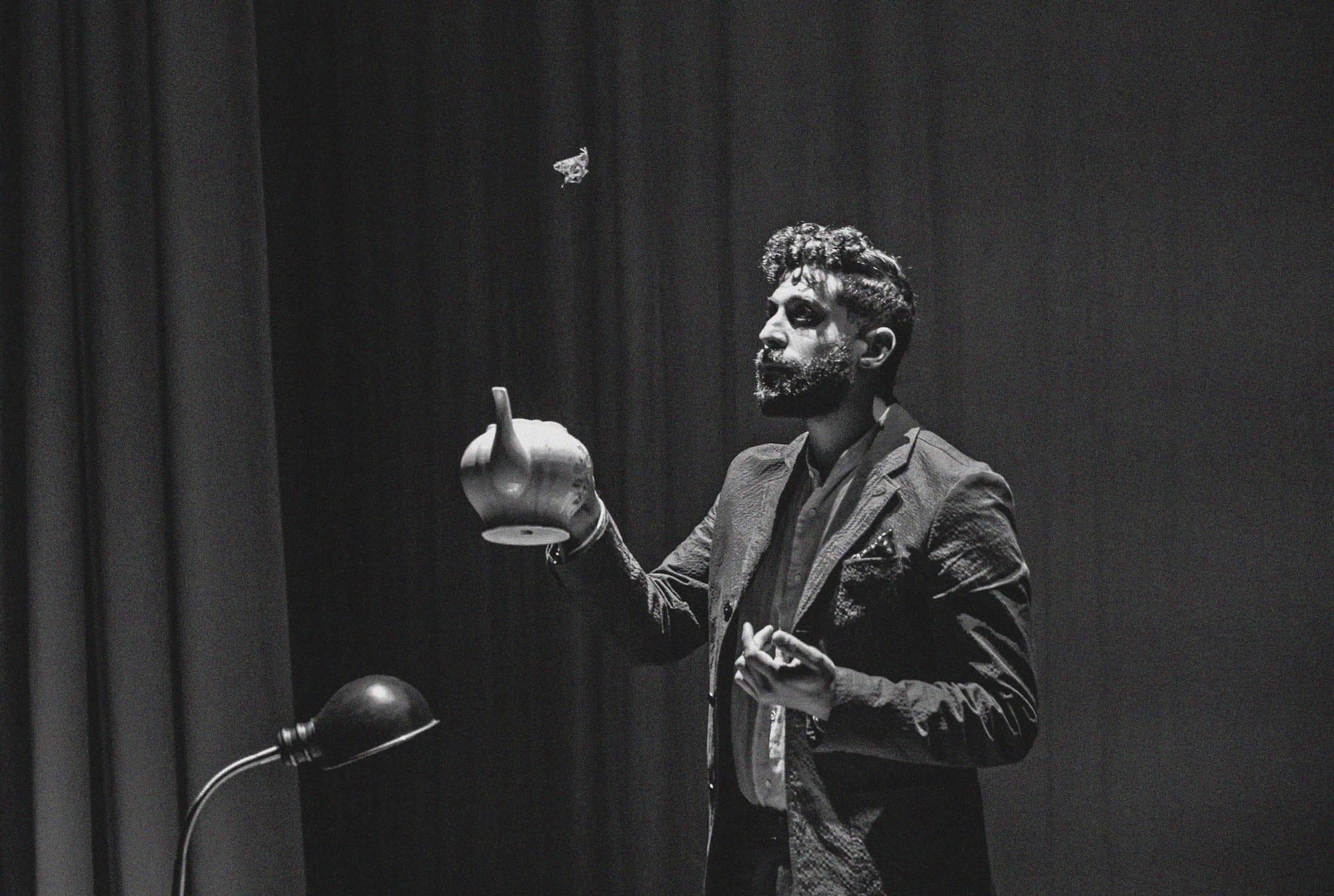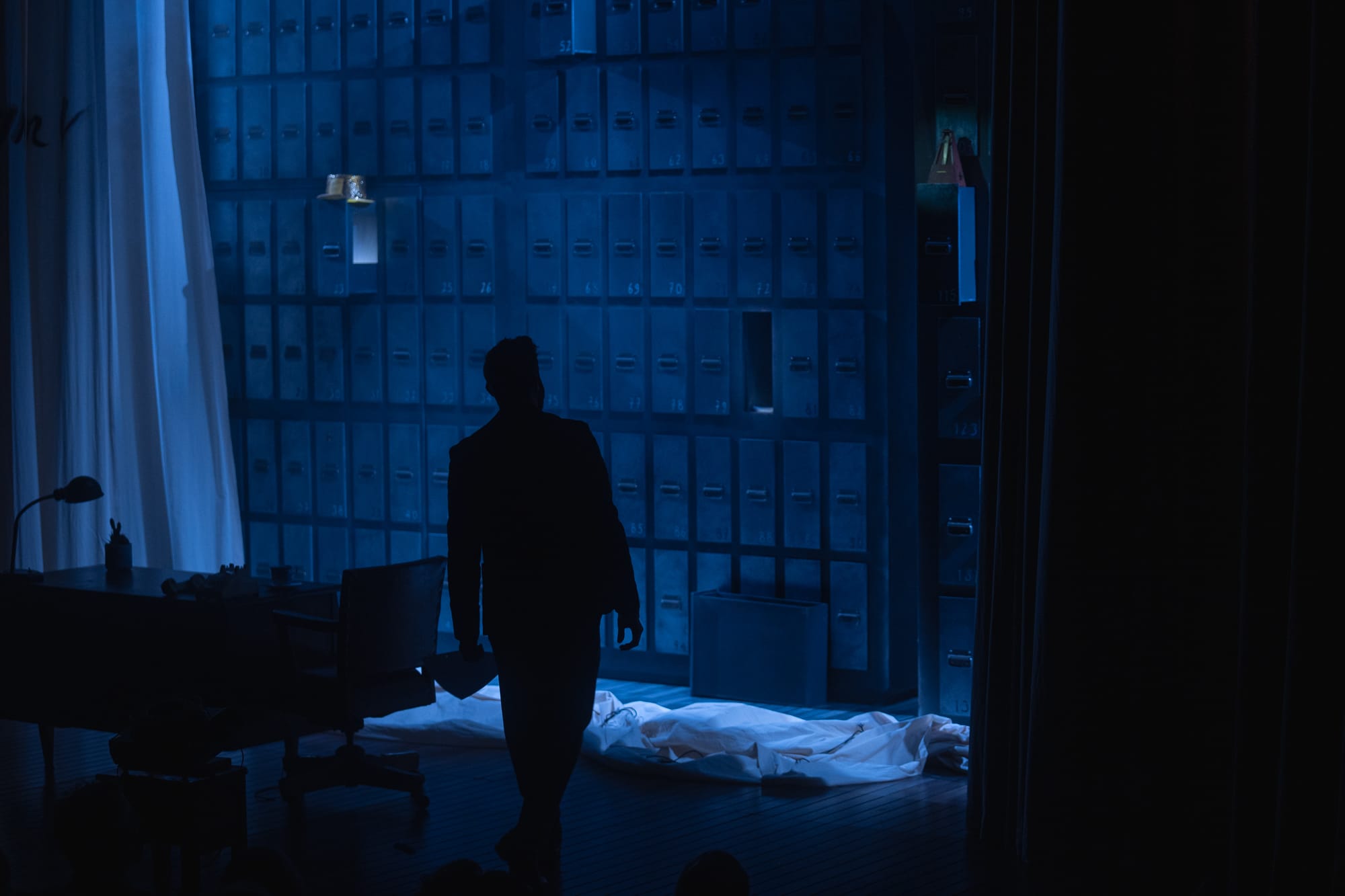If ever there was a magic and mentalism show that speaks to the expansive possibilities and crippling limitations of the human mind, it’s Vinny DePonto’s Mindplay, now playing at the Greenwich House Theater in New York City.
The 90-minute show is born of DePonto’s own struggles with anxiety, panic attacks, and the helplessness he felt as his beloved grandfather grew old and lost his memories. It premiered at the Geffen Playhouse in Los Angeles in 2022 (where it was billed as “a love letter to the imperfect mind”), with subsequent runs in Washington, D.C., and Boston.
Heavy on theater and personal revelation (think Derek DelGaudio’s In & Of Itself) and relying on mentalism imbued with emotion and intriguing plotlines (think Derren Brown, whom DePonto calls a “dear friend”), Mindplay is the latest example in a growing trend to take mentalism to a level beyond “you think of something, and I’ll tell you what it is.”

The show relies on many familiar tricks and techniques of the mentalist, including Q& A, a Book Test, Confabulation, and others, all of which DePonto employs to reveal the thoughts, fears, secrets, and memories of profound love and loss in the lives of audience members. More poignantly, DePonto reveals something about himself: how he sought relief from debilitating anxiety in part by confronting the thoughts and memories haunting his own psyche—visually represented by set designer Sibyl Wickersheimer as steel drawers in a maze of filing cabinets.
“Enough!” DePonto yells during Mindplay, as his thoughts overwhelm him and clamor to escape the locked drawers in which he has filed them away. It’s as if the show’s catchphrase—“What’s on your mind?”—is invoking not only what you’re thinking (the traditional purview of the mentalist), but also what’s weighing on you and how you cope with the strain. In real life, DePonto learned to deal with his anxiety through therapy, medication, breathing techniques, and eventually his art.

At this point you might wonder: Is this a magic and mentalism act or a one-person play? Spoiler alert: It’s both. DePonto is using magic and mentalism to tell a specific story, as opposed to starting with a bunch of tricks he wanted to perform and then trying to figure out how to string them all together. A good example is how he keeps returning to Q& A at various points throughout the performance, setting up each revelation as a separate scene in the broader drama. “In a way, my whole show is a giant Q& A,” DePonto tells Genii.
Consider one scene in which DePonto uncovers a specific fear that has risen to the forefront of a spectator’s mind during an impromptu tea service, in which the paper from a teabag is set on fire and rises into the air before settling back down into the teapot (reminiscent of Andrew Mayne’s Tea Ceremony from his book, Mad Mojo).
It’s a powerful theatrical moment. It’s also a risky approach, as DePonto learned early on when performing Q& A for a particularly emotional person for the first time. “I had left the stage feeling like an imposter,” he says. (Note: During both of the performances of Mindplay I attended, volunteers from the audience either choked up or were moved to tears.)

“It might be a little uncomfortable for some people,” says DePonto. “But I’m OK with that. We are taking a little risk.” He also shares how Mindplay’s director, Andrew Neilser, explains the show’s conceit: “He explained how we’re not using their thoughts against them like a medium. We’re just saying their thoughts out loud, creating space for them to say those things out loud, and sometimes that’s cathartic. So, I really tried to focus on that, a gift of magic in that moment, instead of taking advantage of people’s trauma.”
DePonto also introduces the Q&A concept with forthright honesty early in Mindplay. “I invited you here to do a show about thoughts,” he says. “And many of you have volunteered to participate, which means confronting some of those thoughts. I’ll be choosing from these throughout the course of the show for these tricks. And they are tricks. And this is a show. So please don’t come up to me afterwards and say, ‘What number am I thinking of?’” He breaks the tension early and often with humor like this, along with plenty of goodwill and clever uses of audience participation.
“Nobody has come up to me afterwards and said, ‘How dare you?’”says DePonto.“There’s this self-selecting that happens. People choose to submit these particular thoughts, and they choose to buy into the performance. But instead of being up on stage and being in front of a bunch of strangers and feeling closed off, the opposite happens. People allow themselves to feel that thought.”

You could argue that this kind of self-selection also applies to hypnosis shows and seances, and in that sense, Mindplay might come off as manipulative—using deception to achieve intimacy. But the experience is redeemed by DePonto, whose willingness to reveal his own thoughts, fears, and coping mechanisms builds a level of trust and sincerity that resonates.
DePonto was initially hesitant to be so honest on stage. “I was worried about putting that part of myself on stage and opening it up to criticism: ‘Oh, that was lame. I didn’t need that. I wanted to see magic tricks.’” But the risk has yielded a bittersweet reward. “There’s this sadness when the audience leaves,” he says. “There’s this personal thing that I think lots of people are moving through, especially in this day and age. And I think I’m connecting with people through that. A lot of people are coming up to me afterwards [and] sharing things that are incredibly meaningful.”
Said another way, DePonto’s focus may be on the mind, but what he ultimately may be reaching for is far more important: people’s hearts.
Color photos by Chris Ruggiero / Black and white photo by Jeff Lorch
